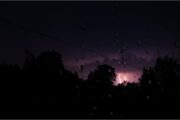Hawaii! A lifelong dream came true this February when I visited these enchanting islands. Upon arrival in Honolulu our foursome received the traditional greeting of fresh lei blossom necklaces, accompanied by “Aloha”! Greeters also taught us a hand signal that has become a trademark of Hawaiian people: an outstretched hand, palm down, with little finger and thumb raised, and the other fingers pressed into the palm, is the signal to “hang loose” or relax. That set the mood for a memorable holiday.
Our two-week tour of Oahu, Kauai, Maui, and Hawaii, offered us a tantalizing flavour of the islands. Although very mountainous with small fertile valleys, the countryside is surprisingly green with lush vegetation covering steep, inaccessible slopes. The modern highways, snaking through urban and rural areas, skirted nearly perpendicular volcanic outcrops found in abundance everywhere. The urban commercial and residential areas are attractive and uncluttered, giving the appearance of a fairly affluent society. The bus drivers, however, were not shy about asking for a tip, and made certain to shake passengers’ hands as they left the bus. Their often-heard complaint of the high cost of living in Hawaii became somewhat tedious.
From a Canadian perspective, Hawaii enjoys a perfect climate, with little humidity, consistently warm temperatures, and sufficient rainfall in most areas. This has allowed Mother Nature, over the eons, to create an environment ideally suited to human habitation. More than 1,600 years ago, ancient Polynesians, set sail in outrigger canoes to traverse the thousands of miles of open water. They reached this uninhabited outcrop of islands that stretched for 1500 miles in the middle of the Pacific Ocean and found an ocean paradise, caressed by warm waters and an abundant seafood supply. Long before they were discovered by other civilizations, these skilled ancient mariners had developed a fairly sophisticated society and unique culture.
The entire archipelago was sculpted from molten rock over hundreds of millions of years, by lava spewing forth out of massive fissures from deep inside the earth. Mauna Loa (Long Mountain) is 120 km wide, and covering nearly half the island of Hawaii, is the largest active volcano on the planet. Our bus took us inside the volcano, although it appeared as though we were simply traveling along an ordinary two-lane highway, except for the jets of steam rising here and there on each side of the roadway. The tour guide explained that this occurs when moisture filters through the porous rock and strikes the hot underbelly deep underground, creating the steam.
We really grasped the immense power of a lava flow when we had the opportunity to walk underground for more than 300 feet through a “lava tube,” once formed by a river of hot lava. It resembled an immense subway tunnel built by the rotating blades of large boring machines that chewed their way through solid rock. But this tube was three times the size of a subway tunnel. (There are millions of these tubes throughout the islands. One of them is 80 feet high and more than 100 feet wide). At the entrance to our tube we saw tangles of huge ferns as tall as large trees.




